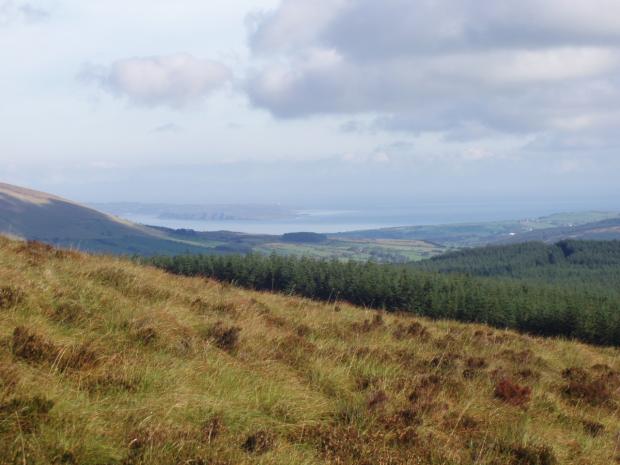
This area is of special scientific interest because of its peatland flora and associated fauna. Slieveanorra and Croaghan ASSI is a largely intact blanket bog. The area is characterised by undulating topography and the peatland complex consists of a series of raised bog peat units on deeper peat within an enveloping mantle of blanket bog. It extends from Slieveanorra Mountain north over Black Hill to Croaghan Mountain. Slieveanorra itself is underlain by Palaeogene age basalts (approximately 60 million years old) from the Antrim Lava Group. Moving north west, the geology is composed of Dalradian rocks (545 million year old approx), predominantly metamorphosed mudstones and sandstones of the Southern Highland Group. The continuity of the intact bog has been interrupted in places by roads and adjacent coniferous plantations, resulting in a series of separate compartments within the ASSI.
Biological interest relates to the peatland communities and structural features, which are characteristic of largely undisturbed upland habitats. The area includes a well-developed pool system on deep peat, in addition to flat bog plains and adjacent cutover bog. There is also a mosaic of wet and dry upland heaths where the peats are shallower.
The vegetation on the intact bog surface is characterised by bog-mosses, ericoid dwarf-shrubs and associated species. The composition and abundance of these depends upon local environmental conditions, particularly the height of the water table.
Much of the bog plain is dominated by heather, with cross-leaved heath, hare’s-tail cottongrass, crowberry and bilberry growing over a mixed moss and liverwort mat. In some places the peat surface is wetter and displays a well-developed microtopography, with prominent red bog-moss hummocks supporting reindeer lichen, and heath plait-moss and the liverworts purple spoonwort and bog-moss flapwort. Between these hummocks there are flat, waterlogged lawns with locally abundant bog asphodel. Other species recorded throughout the intact surface include papillose bog-moss and woollyf fringe-moss, which can form large hummocks.
The summit of Slieveanorra and the northern flanks of the mountain are undergoing extensive erosion resulting in excellent examples of haggs and gullies. A mosaic of wet and dry heaths occurs on the thin peats that occur in these areas. Most notably an area of woolly fringe-moss dominated montane heath occurs around the summit of Slieveanorra, with the scarce alpine clubmoss and the rare cowberry also occurring here.
Slieveanorra and Croaghan ASSI incorporates Slieveanorra National Nature Reserve which is comprised of both an area on the summit of Slieveanorra Mountain, which shows the different stages in the formation and erosion and regeneration of peat, and an area of deep peat to the north of Altarichard Road. The later area is a classic example of an upland raised bog, with occasional Austin's bog-moss, a notable hummock forming species. The surface is very wet, and along with the peatland compartment to the north west of the Nature Reserve, supports a well developed complex of large, deep pools containing aquatic bog-mosses, particularly cow-horn bog-moss with occasional feathery bog-moss around the periphery. Bogbean is also often found within the pools. The vegetation surrounding the pools is comprised of a luxuriant mat of bog-mosses, predominantly red bog-moss and Magellanic bog-moss with both round-leaved sundew and great sundew.
The bog provides important habitat for upland birds particularly merlin and hen harrier. Both of these species currently breed in adjoining areas but use the open moorland for foraging. Slieveanorra and Croaghan ASSI contains vegetation dominated by heather and these areas may support nesting merlin and hen harrier in the future. Additional notable breeding species include snipe, red grouse and raven.
Slieveanorra and Croaghan ASSI also provides an extensive area of undisturbed upland habitat that is very valuable for associated invertebrates, birds and mammals. Common lizard has also been recorded on the site.
Related articles
- ASSI Guidance for Public Bodies/Competent Authorities
- Coastal Areas of Special Scientific Interest
- Conservation Management Plans (CMPs)
- European Marine Sites - Marine Special Areas of Conservation and Special Protection Areas
- Introduction to Conservation Management Plans (CMPs) for Northern Ireland’s Special Areas of Conservation
- Marine Conservation Zones
- Marine Protected Areas
- Marine Ramsar sites
- Portrush Coastal Zone
- Special Areas of Conservation
- Special Areas of Conservation for Harbour porpoise
- Special Protection Areas
